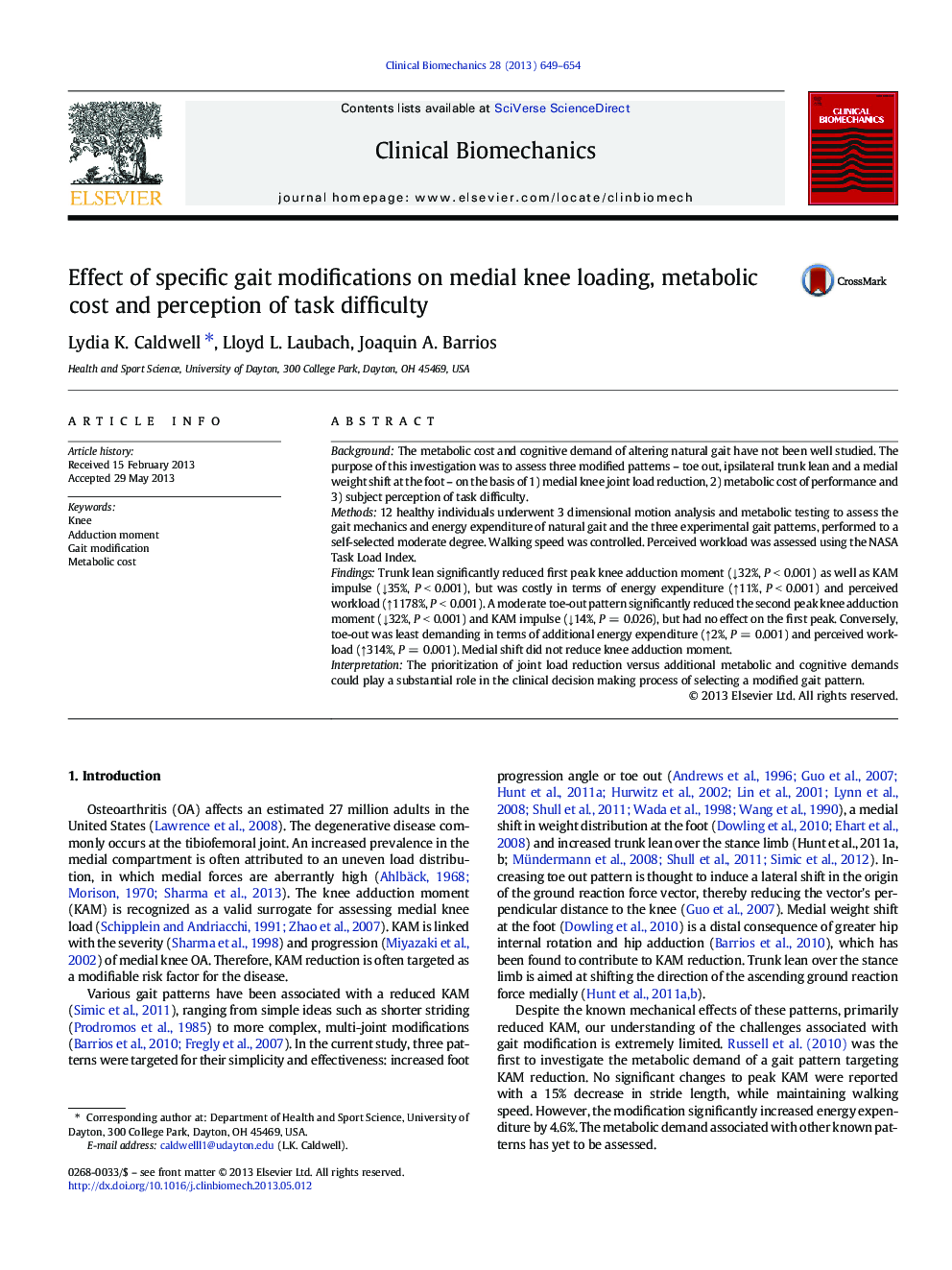| Article ID | Journal | Published Year | Pages | File Type |
|---|---|---|---|---|
| 4050659 | Clinical Biomechanics | 2013 | 6 Pages |
BackgroundThe metabolic cost and cognitive demand of altering natural gait have not been well studied. The purpose of this investigation was to assess three modified patterns – toe out, ipsilateral trunk lean and a medial weight shift at the foot – on the basis of 1) medial knee joint load reduction, 2) metabolic cost of performance and 3) subject perception of task difficulty.Methods12 healthy individuals underwent 3 dimensional motion analysis and metabolic testing to assess the gait mechanics and energy expenditure of natural gait and the three experimental gait patterns, performed to a self-selected moderate degree. Walking speed was controlled. Perceived workload was assessed using the NASA Task Load Index.FindingsTrunk lean significantly reduced first peak knee adduction moment (↓32%, P < 0.001) as well as KAM impulse (↓35%, P < 0.001), but was costly in terms of energy expenditure (↑11%, P < 0.001) and perceived workload (↑1178%, P < 0.001). A moderate toe-out pattern significantly reduced the second peak knee adduction moment (↓32%, P < 0.001) and KAM impulse (↓14%, P = 0.026), but had no effect on the first peak. Conversely, toe-out was least demanding in terms of additional energy expenditure (↑2%, P = 0.001) and perceived workload (↑314%, P = 0.001). Medial shift did not reduce knee adduction moment.InterpretationThe prioritization of joint load reduction versus additional metabolic and cognitive demands could play a substantial role in the clinical decision making process of selecting a modified gait pattern.
